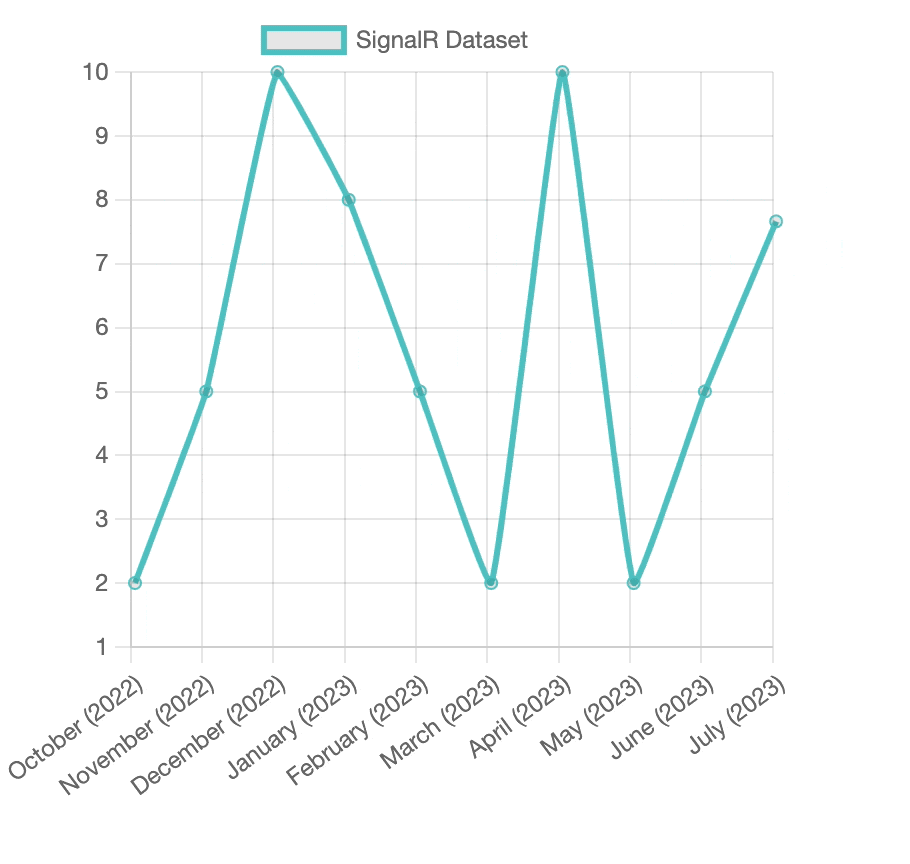This project shows how to update a real-time chart in your web browser using technologies like ASP.NET Core, SignalR, and Chart.js.
Note The backend is contrived using a
Buffertype that is not thread-safe. Substitute your own implementation where data is derived from a database, web service, etc.
- The latest .NET SDK (6+) (https://dot.net)
- A .NET IDE like JetBrains Rider
After installing the dotnet sdk, you can run the project.
dotnet run --project Charts -lp httpThen navigate to http://localhost:5296 if the browser did not open.
- Setting up SignalR was relatively painless, but required some reading about what a
Hubis and what aIHubContext<THub>is. - Using LibMan to manage JavaScript dependencies is nice. Check out
libman.jsonin web project. There are several SignalR packages, so finding the right one was annoying.
- A background service is a nice approach to having a recurring event happen.
- I was able to do everything in Razor, but could have easily moved things to the
IndexModel. By everything I mean injecting dependencies and generating the starting JSON for our Chart.JS element. - I ❤️ Razor Pages
- Relatively straightforward to set up and very responsive. The use of Canvas also allows for some interesting scenarios that I could explore later.
- Getting data from the Razor Page/ASP.NET Core to ChartJs is an interesting challenge. I ended up using a
scriptelement with a type ofapplication/json. Seems reasonable to me. The other choice was a global value on thewindowelement.
